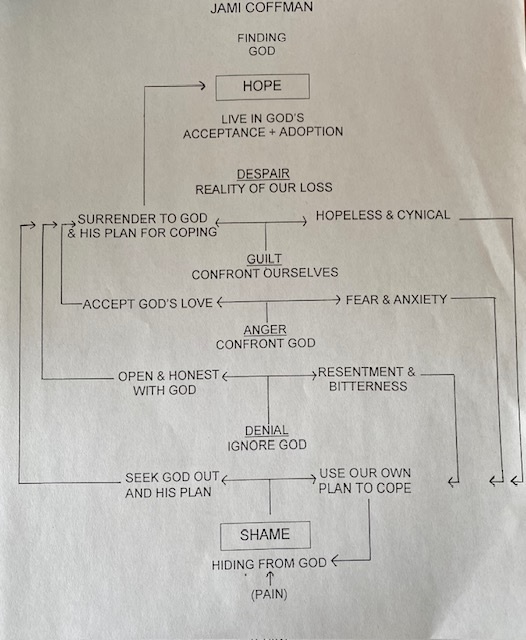“Growth equals change; change equals loss; loss equals pain; so inevitably, growth equals pain.”
― Samuel Chand, Leadership Pain: The Classroom for Growth
Leaders see the potential for something better and within that is hope. People join towards a new potential because of the motivation for something more. We enjoy stories because they inspire us through the journey of others and the drive towards a happy ending.
Yet, within stories are also the challenges that include pain. Whenever we engage in change, we also walk through pain. I know of leaders and teams working to keep inspired through the process of change. I also know of the pain of people right now who are experiencing the loss of a loved one, illnesses, job transitions, challenges with family, and the hurt of being scathed on social media posts.
So how do we move through times of pain well and help others to do so, too? As I asked myself this question, I remembered a time in my life of intense unexpected pain. I received word that my father had to go through open heart surgery. I lived thousands of miles away and was not expecting to hear this about my dad, who never got sick and was an avid runner. I think the pain had to be intense and unexpected to get my attention. Through it, I also learned that pain is connected to grief, which is not an event, but is instead a process of emotions that prompt us in choices along the way.
Below is a diagram that I created to encapsulate what I learned, and an explanation of the steps involved:

Pain
Pain gets our attention. Have you ever stubbed your toe, walked into the pointed corner of a table, or bumped heads with another person? Yeah, it hurts, and the pain is immediate. I think one of our first reactions to pain can come out of shame. It is a gut reaction to not being perfect and living in a world where things don’t always go how we want. Failure brings pain and our reaction can be shame.
When we feel shame, a natural response is to hide. In the diagram, I refer to hiding from God, which is about how shame can cause us to hide from the deepest level of our meaning or being in life. However, we can also see this in practical ways such as trying to hide a failure. Have you ever walked into a table and quickly acted like you didn’t? Have you made a mistake on a work project and then tried to correct it before others saw it quickly?
Denial
Here is where we have a choice. Do we choose our own way of coping that keeps us in hiding? Or do we engage it, become curious, and even vulnerable to learn from it? When we try to hide something, it can lead us into behaviors that create a cycle of hiding. For example, if we lie, we may have to create another lie to cover the previous lie. If we turn to alcohol to numb, we may have to keep using substances to numb us. If we deflect and blame others, we continue a cycle of communication that leads to people distancing and not trusting us.
Sometimes, intense pain can put us in shock, and we need to give ourselves time to absorb the event. However, there comes a time when we can choose to go into denial (hide) or to start to process the pain. This involves humility and vulnerability to face what the pain is revealing and how we can learn within it. We can give ourselves space to dialogue within or with others.
A leader has told me that he is finding that his best way to cope with stress is by being vulnerable. When he doesn’t know (which feels like a failure and then shame), he chooses to be proactive in talking to his peers about where he is at a loss in his problem-solving. By being open with his peers, he is not being shunned, but instead, he is finding that his peers are opening up to him more. They are then being real with each other about the complex problems their organization is facing and how to address them.
Anger
When I bump heads with another person my first reaction is immediate anger. I then often let that anger spew out on the other person. Not the best way to handle this! Anger is a very normal reaction to pain. It is also a signal that we have an opportunity of a choice. Do we work through the anger? Or do we push it down within us and let it simmer?
We have a choice to confront. We may need to confront another person. Someone may have harmed, hurt, or frustrated us and we need to have a conversation with them about it. In the diagram, I refer to confronting God because this is the deepest level of confrontation because we may feel that God (and the deepest level of our heart) is letting us down.
When we choose not to confront it, this leads to anger simmering, which can turn into resentment and bitterness. These emotions can feel justified and yet they only do damage to us. When we choose to be open and honest with the anger, we open ourselves to vulnerability and the ability to move through the pain and grief to an opportunity. It may lead to a relationship being improved, a boundary set, or a new character development in ourselves, etc. What it leads to will depend on each situation as you walk this process out.
Reflection
This can be a lot to reflect on. What insights have you gained about pain, denial, and anger? What choices have you been making? Have the choices been cycling you back to shame and putting you in a pattern of pain? Or are you making choices that are cycling you upward toward a place of growth for yourself and others?
I plan to share about the other levels in this process in my next article. In the meantime, reach out to me with any of your thoughts. I also encourage you to connect with others to process too. Share with me what you are learning.
